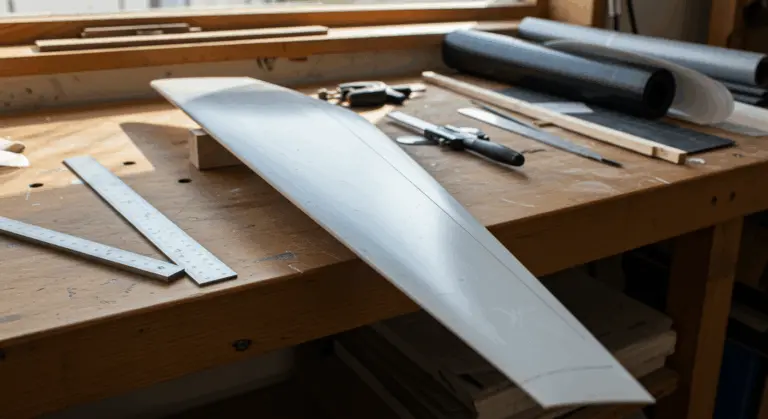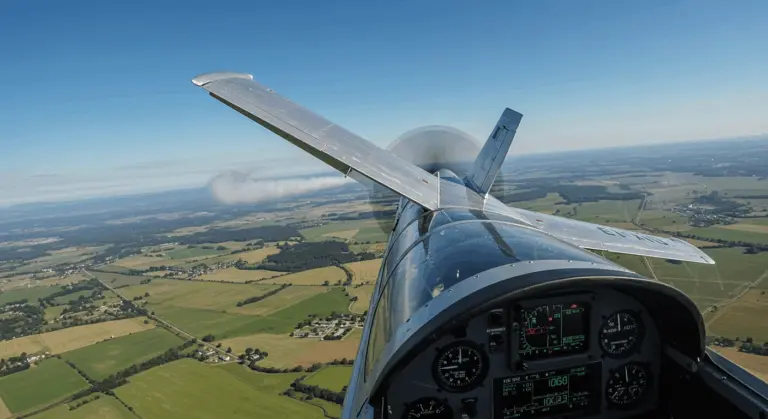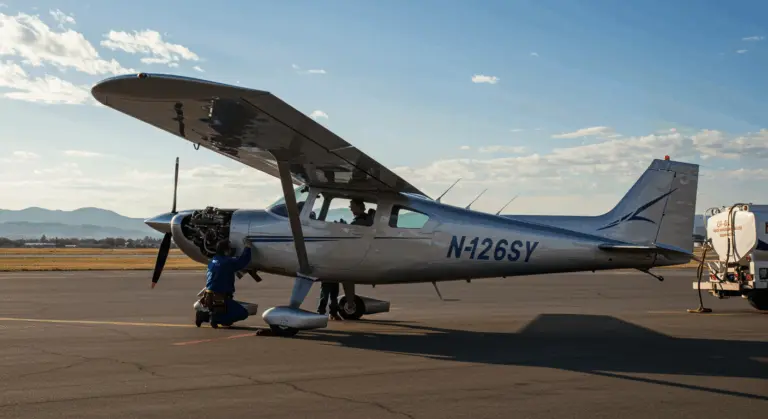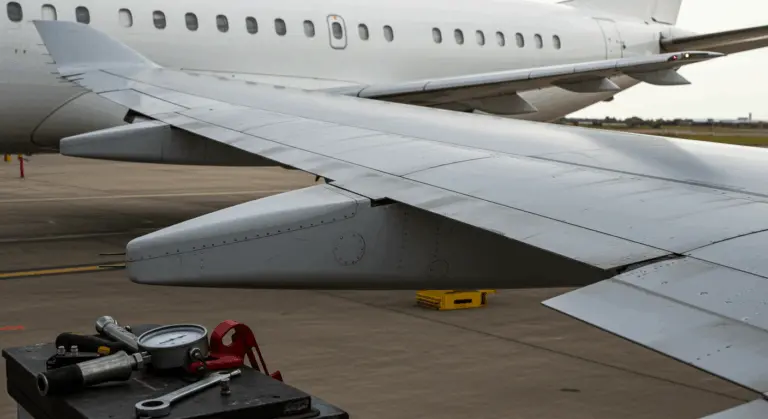Understanding Airflow Over a Wing – Principles of Aerodynamics
The Basics of Airflow Over a Wing
At its core, the interaction between air and a wing’s surface creates the aerodynamic forces—primarily lift and drag—that make flight possible.
An aircraft wing is an airfoil, a structure with a curved upper surface and a flatter lower one. This deliberate asymmetry is essential for generating flight-enabling forces. When an aircraft moves forward, air splits at the wing’s leading edge, flowing both above and below the wing.
The wing’s curved upper surface causes air to accelerate, creating a lower-pressure zone above the wing relative to the higher-pressure region beneath.
This pressure differential, coupled with the downward deflection of air streaming off the trailing edge—a manifestation of Newton’s Third Law—produces lift: the upward force that defies gravity.
Secondary phenomena emerge from this pressure imbalance. Airflow over the upper surface tends to migrate inward, while air beneath the wing flows outward.
The downward-deflected air trailing the wing creates what’s known as downwash, counterbalanced by up wash ahead of the leading edge.
At steep angles of attack—when the wing tilts aggressively into oncoming air—smooth airflow can break away from the upper surface, triggering a stall and precipitous lift loss.
What is Lift, and How is it Generated?
Lift is generated through several interwoven mechanisms. As air navigates the wing’s carefully designed contours, it creates a pressure differential between upper and lower surfaces.
Contrary to oversimplified explanations, lift transcends mere differences in air travel distances over wing surfaces.
This air deflection represents momentum change, and Newton’s laws demand a force to create such change.
Lift depends on multiple variables: airfoil geometry, surface area, air density, and critically—aircraft speed and angle of attack.
Understanding Drag Forces on Wings
Drag represents the aerodynamic enemy of forward motion—a resistance force that thrust must perpetually overcome.
This opposition emerges from friction and pressure variations as the wing cuts through air.
Drag is categorized into several main types:
-
Parasitic Drag: Results from friction between the air and the aircraft’s surfaces (skin friction) and its shape (form drag).
-
Induced Drag: Generated as a byproduct of lift, caused by wing tip vortices that form due to pressure differences.
Designers reduce drag through streamlined geometries, polished surfaces, and innovations like winglets—devices that disrupt wing tip vortices to enhance fuel efficiency.
Efficient flight depends on the delicate lift-drag equilibrium. While lift conquers gravity, drag minimization determines how effectively thrust translates into forward momentum—directly impacting range, speed, and fuel consumption.
The Role of Boundary Layers in Airflow
The boundary layer represents one of aerodynamics’ most important yet often overlooked phenomena.
As the boundary layer thickens downstream, friction saps energy from the airflow.
Engineers address this challenge with devices like vortex generators—small fins that re-energize the boundary layer by blending high-energy free-stream air with sluggish surface air, delaying separation and improving aerodynamic efficiency.
Reynolds Number and Flow Types
The Reynolds Number serves as a dimensionless predictor of airflow behavior, quantifying the balance between inertial and viscous forces.
Laminar flow—characterized by modest Reynolds numbers—features smooth, orderly air layers.
Turbulent flow emerges at elevated Reynolds numbers, displaying chaotic, mixed characteristics.
The laminar-to-turbulent transition point critically affects aircraft performance.
Aerodynamics Principles Governing Flight
While Bernoulli’s Principle offers one lens for understanding lift, the full aerodynamic picture also includes Newton’s Third Law.
Airfoil geometry—encompassing camber, thickness, and leading-edge architecture—undergoes optimization for distinct flight regimes, spanning low-speed operations to transonic and supersonic realms where shock wave management becomes paramount.
Beyond fundamental lift principles, aerodynamicists must consider three-dimensional effects inherent to finite wings.
The Importance of Airfoil Shape
Airfoil geometry is the most important factor governing wing aerodynamic behavior—its precise contours control the pressure distribution that creates lift and drag.
High-speed aircraft employ thin, minimally-cambered airfoils to reduce drag, while slower aircraft favor highly-cambered profiles to maximize lift generation.
Modern computational fluid dynamics has transformed airfoil design, allowing engineers to craft specialized geometries for targeted performance criteria.
Practical Applications of Airflow Principles
Aircraft designers use aerodynamic principles to create wings that generate optimal lift while minimizing drag penalties.
Consider vortex generators: they energize boundary layers to delay flow separation. Winglets disrupt wing tip vortices to reduce induced drag, improving long-haul fuel efficiency by 3–5%.
The principles of airflow are applied in many other fields:
-
Automotive Engineering: Vehicle bodies are shaped to reduce aerodynamic drag, improving fuel economy and stability.
-
Motorsport: Race cars like those in Formula 1 use inverted airfoils (wings) to generate downforce, increasing cornering grip.
-
Wind Energy: Wind turbine blades are essentially rotating airfoils designed to efficiently extract energy from the air.
-
Sports Equipment: Aerodynamics influences the design of items like dimpled golf balls and streamlined cycling helmets to minimize drag.







